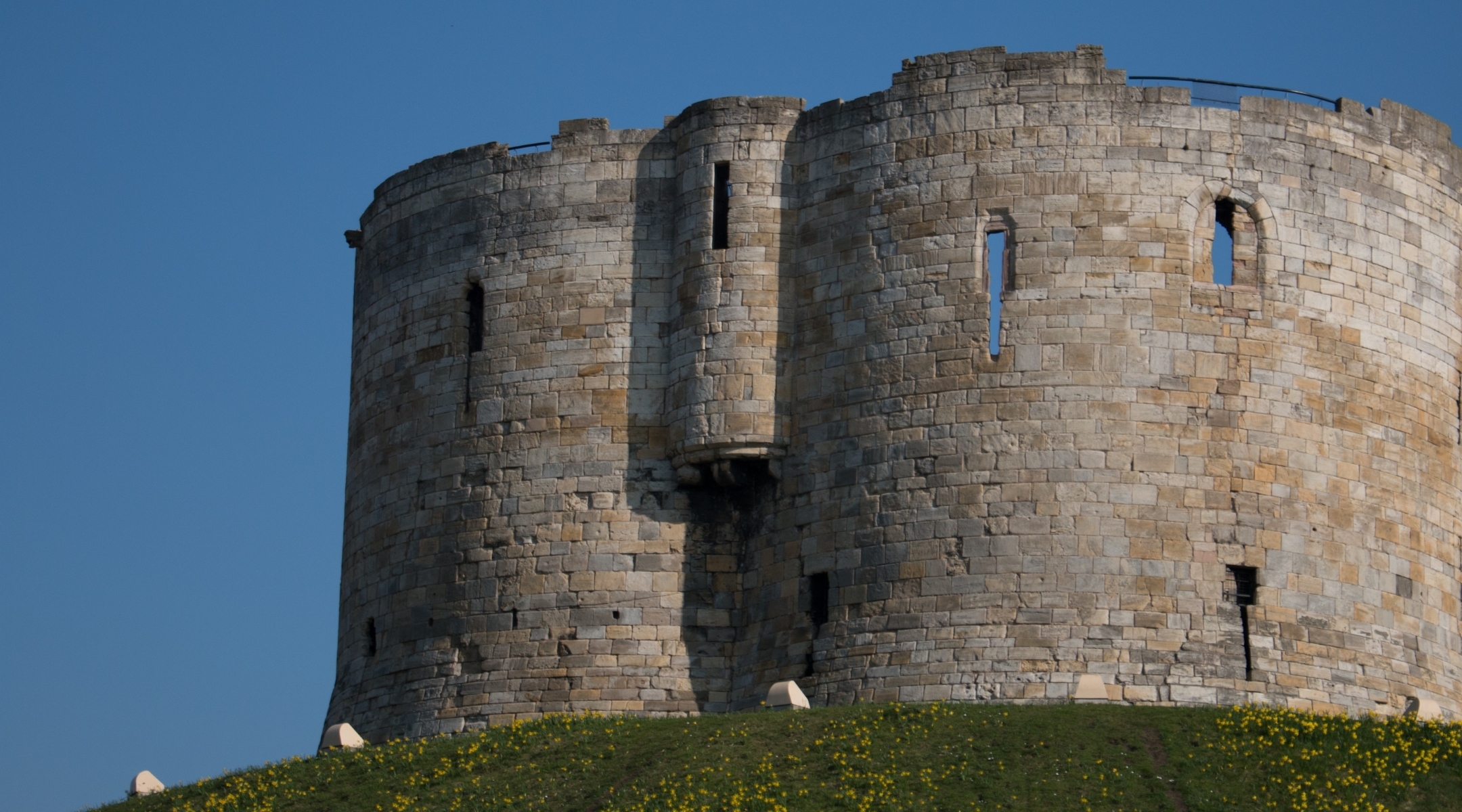A medieval massacre nearly wiped out the Jews of York, England. New research shows how the community recovered.
Jews rebuilt their community in the decades after a pogrom and before the expulsion of Jews from England in 1290

Clifford’s Tower, the site of the massacre of the Jews of York in 1190. Courtesy of Wikimedia Commons
(JTA) — Earlier this month, the small Jewish community in the British city of York celebrated the arrival of a new rabbi, its first since the city’s Jewish community was nearly wiped out in a pogrom in 1190.
Or so they thought.
Just weeks after the new rabbi, Elisheva Salamo, arrived in the city, a team of researchers has discovered that Jews in York rebuilt their community in the decades after the pogrom — though they still faced antisemitism in the years leading up to the expulsion of Jews from England in 1290.
In findings published this week, a team of researchers from the University of York have found the location of the city’s first synagogue, and discovered how, in the years after 1190, leading figures from the Jewish community cooperated with local church leadership in purchasing a stone building that became the city’s Guildhall, which functioned at the time as a civic center.
“The amount of new information that has been uncovered by the team is truly inspiring,” Howard Duckworth, warden of the York Synagogue, said in a statement. “We have discovered a totally new history of Jews in York, which for many years has been overshadowed by the massacre at Clifford’s Tower. This research is so much more, a real history anyone can relate to. When you walk through York now, you see York with totally different eyes.”
The researchers were part of a project called StreetLife York, which hopes to “revitalise and diversify” the city’s main street, called Coney Street, in part by learning about its more than 1,000-year history. The researchers focused on Jews who lived on Coney Street during the 1200s.
“The massacre of York’s Jews in 1190 has overshadowed the fact that from the 1210s onwards there was once more a thriving Jewish community living and working in the city in mostly harmonious relations with their Christian neighbours,” read an announcement from the university. It added that “the chief Jewish citizens of the city were also some of the most important figures in England.”
In the 1190 massacre, which occurred on the Shabbat before Passover, the Jews of York sought refuge in a tower in the king’s castle as antisemitic rioters intended to forcibly convert them to Christianity or kill them. The city’s Jews chose to kill themselves rather than convert, and approximately 150 people are estimated to have died in the pogrom.
Basing their designs on surviving medieval houses in York, the researchers digitally reconstructed the homes of prominent Jewish leaders of York following the massacre — including an uncle-and-nephew pair, Leo Episcopus and Aaron of York; Aaron’s wife Henna, and his nephew Josce le Jovene. The researchers also found the exact locations of homes of the two leading members of the Jewish community that existed prior to the pogrom in 1190.
They also found that the community’s first synagogue was located on the back plot of Aaron of York’s house. Leo and Aaron served as representatives of the whole Jewish community of England, and for a time, Aaron was considered the richest man in the country.
The digital reconstruction found that although the synagogue was close to a church, there was no evidence of direct conflict between the two religious communities. But the synagogue, and others in the country, did face discrimination from the king. A 1253 royal statute proclaimed, “In their synagogues the Jews should all subdue their voices when performing their ritual offices, so that Christians shall not hear them.”
Jews were persecuted in other ways as well. In 1279, Josce le Jovene, a moneylender, and his son who was also named Aaron, were “hanged for felony,” though their crimes were not specified, according to researchers.
“During this period hundreds of Jews were being rounded up and apprehended at the Tower of London on the charge of ‘coin clipping’ — namely trimming bits of silver from coins to create new money,” the research project says. “While some Jews managed to escape by paying hefty fines or converting to Christianity, many faced severe sentences, including death.”
In 1290, Jews were expelled from England entirely. They were not permitted to return to England until 1656.
This article originally appeared on JTA.org.













